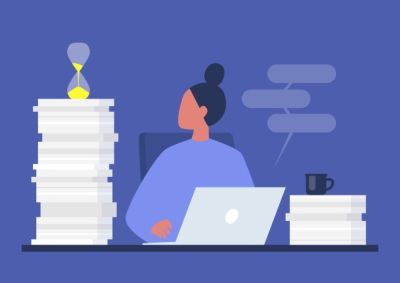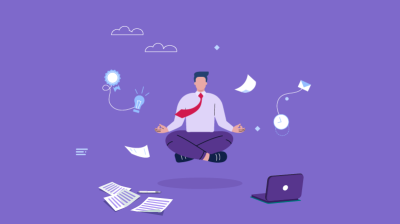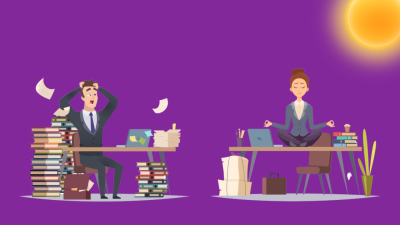Introduction
In the fast-paced and demanding landscape of the modern world, stress and creative burnout have become pervasive challenges. The pressure to consistently deliver innovative ideas and meet deadlines can take a toll on mental well-being and hinder the creative process. In this extensive guide, we explore effective strategies to lower stress levels and prevent the dreaded specter of creative burnout, allowing individuals to navigate their professional and creative pursuits with resilience and vitality.
Understanding Stress and Creative Burnout
Stress is a common reaction to the pressures of daily tasks, deadlines, and responsibilities. While a certain level of stress can be motivating, chronic stress can lead to significant health problems, including anxiety, depression, and physical ailments. Creative burnout, on the other hand, is a state of emotional, mental, and physical exhaustion specific to creative professionals who face relentless pressure to produce innovative work. Recognizing the signs and symptoms of both stress and creative burnout is the first step towards managing and overcoming these challenges, ensuring a sustainable and healthy approach to work and creativity.

1. Deconstructing Stress
Stress is a natural response to challenging situations, but chronic stress can have detrimental effects on both mental and physical health. Understanding the sources of stress, whether they are work-related, personal, or a combination of both, is the first step in managing and mitigating its impact. Identifying these stressors allows for the implementation of targeted strategies to alleviate their influence on our daily lives.
2. The Anatomy of Creative Burnout
Creative burnout is characterized by a state of mental, emotional, and physical exhaustion that results from prolonged stress and overwork. For individuals in creative professions, the pressure to continuously generate original ideas can exacerbate the risk of burnout. Recognizing the signs of burnout, such as decreased productivity, lack of motivation, and feelings of frustration, is crucial for timely intervention and recovery.
Strategies for Lowering Stress
Lowering stress is essential for maintaining both mental and physical health in today’s fast-paced world. Effective stress management involves adopting a variety of strategies that address different aspects of life. From practicing mindfulness and meditation to establishing healthy boundaries between work and personal life, these techniques can help mitigate the negative impacts of stress. Regular physical activity, effective time management, and cultivating a supportive network are also key components in reducing stress levels. By implementing these strategies, individuals can achieve a balanced and healthier lifestyle, enhancing their overall well-being and productivity.
1. Mindfulness and Meditation
Mindfulness and meditation, seamlessly integrated into daily routines, offer transformative benefits in stress reduction. Embracing mindfulness fosters an awareness of the present moment, promoting mental clarity and resilience. Complementing this, meditation serves as a powerful tool for mental reset, enhancing overall well-being.

Accessible through user-friendly apps and guided sessions, these practices cater to individuals with busy schedules, bringing peace and tranquility to hectic lives. By embracing mindfulness and meditation, individuals can cultivate a harmonious balance, navigate stress more effectively, and promote a positive mindset in the midst of life’s demands.
2. Establishing Healthy Boundaries
Establishing healthy boundaries between work and personal life is paramount to safeguarding well-being. By designating specific workspaces and adhering to set work hours, individuals create a structured framework that prevents stress from permeating every facet of their existence. These boundaries not only foster a healthier work-life balance but also act as a shield against the encroachment of professional demands into personal time. The intentional separation of professional and personal spheres contributes to increased productivity, reduced burnout, and an overall improved quality of life, emphasizing the importance of maintaining clear and intentional boundaries in today’s demanding work environments.
3. Regular Physical Activity
Exercise is a potent stress reliever, releasing endorphins that act as natural mood lifters. Incorporating regular physical activity, whether through workouts, walks, or yoga, not only improves physical health but also contributes to enhanced mental well-being. Engaging in physical activity helps reduce stress hormones and stimulates the production of endorphins, chemicals in the brain that act as natural painkillers and mood elevators.
4. Effective Time Management
Mitigating stress requires mastering effective time management techniques amidst numerous tasks. Strategies like the Pomodoro Technique and the Eisenhower Matrix empower individuals to prioritize tasks, efficiently manage workloads, and alleviate the constant pressure that comes with a demanding schedule. The Pomodoro Technique, involving focused work intervals punctuated by short breaks, enhances productivity. Similarly, the Eisenhower Matrix helps in distinguishing between urgent and important tasks, ensuring that efforts are aligned with priorities.
5. Cultivating a Supportive Network
Having a support system is essential for navigating stress. Whether through friends, family, or colleagues, sharing thoughts and concerns can provide a different perspective and emotional support. Professional networks, such as mentorship programs, can offer guidance in challenging work situations. Building and maintaining strong relationships with a network of supportive individuals fosters a sense of belonging and provides a buffer against stress.
Strategies for Preventing Creative Burnout
Preventing creative burnout requires a proactive and mindful approach to managing workload and maintaining mental health. Creative professionals often face unique pressures that can lead to burnout if not properly addressed. Essential strategies for preventing burnout include scheduling regular breaks and ensuring sufficient rest, setting realistic and achievable goals, and incorporating periodic digital detoxes to disconnect from the constant demands of technology.

By prioritizing these practices, individuals can maintain their creative spark, sustain long-term productivity, and avoid the debilitating effects of burnout.
1. Scheduled Breaks and Rest
In the relentless pursuit of creativity, individuals often neglect the crucial aspect of rest. Scheduling regular breaks and prioritizing sufficient sleep become essential pillars in preventing burnout. These intentional pauses are not mere indulgences but vital contributors to maintaining cognitive function and nurturing creativity.
2. Set Realistic Goals
Unrealistic expectations and overambitious goals can lead to burnout. Setting achievable and realistic milestones allows for a sense of accomplishment without overwhelming the creative process. Breaking down large projects into manageable tasks and setting attainable deadlines help maintain motivation and ensure steady progress without the stress of unreachable goals.
3. Periodic Digital Detox
In the age of constant connectivity, digital devices can unwittingly contribute to burnout. Recognizing this, periodic digital detoxes emerge as a vital strategy. During these intentional breaks, individuals disconnect from screens, immersing themselves in analog activities. This deliberate disconnection provides a mental reprieve, fostering a reset that is conducive to enhanced well-being. As individuals detach from the digital realm, they create space for mental rejuvenation, reducing the risk of burnout. Engaging in analog pursuits during these detoxes not only offers respite but also stimulates creativity, emphasizing the transformative power of periodic digital detoxes in promoting a healthier and more balanced relationship with technology.
The Holistic Approach to Well-being
Achieving a balanced and fulfilling professional and creative life necessitates a holistic approach to well-being. This involves integrating various strategies that address both mental and physical health, allowing individuals to thrive in their personal and professional endeavors. By combining mindfulness, effective stress management techniques, and practices tailored to prevent creative burnout, a holistic approach fosters resilience and sustained creativity. Embracing this comprehensive perspective on well-being ensures that individuals can navigate the challenges of modern life with vitality and maintain a harmonious balance between productivity and personal fulfillment.
In conclusion, the pursuit reof a balanced and fulfilling professional and cative life involves a holistic approach to well-being. Lowering stress and preventing creative burnout necessitate a combination of mindfulness, effective stress management, and strategies tailored to the unique demands of creative endeavors. By integrating these practices into daily life, individuals can cultivate resilience, sustain creativity, and foster a harmonious balance between productivity and personal fulfillment.
Related Posts





